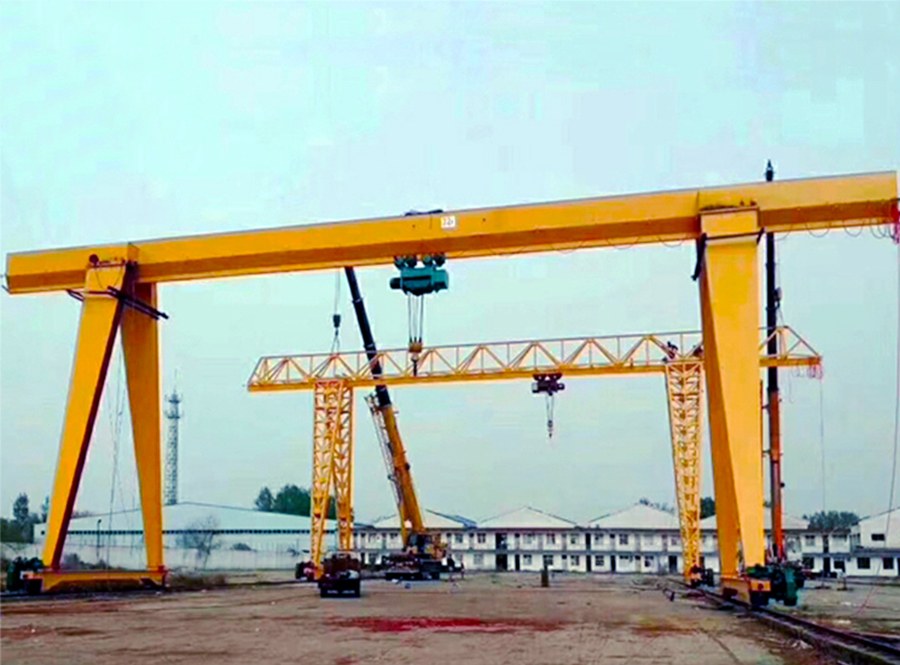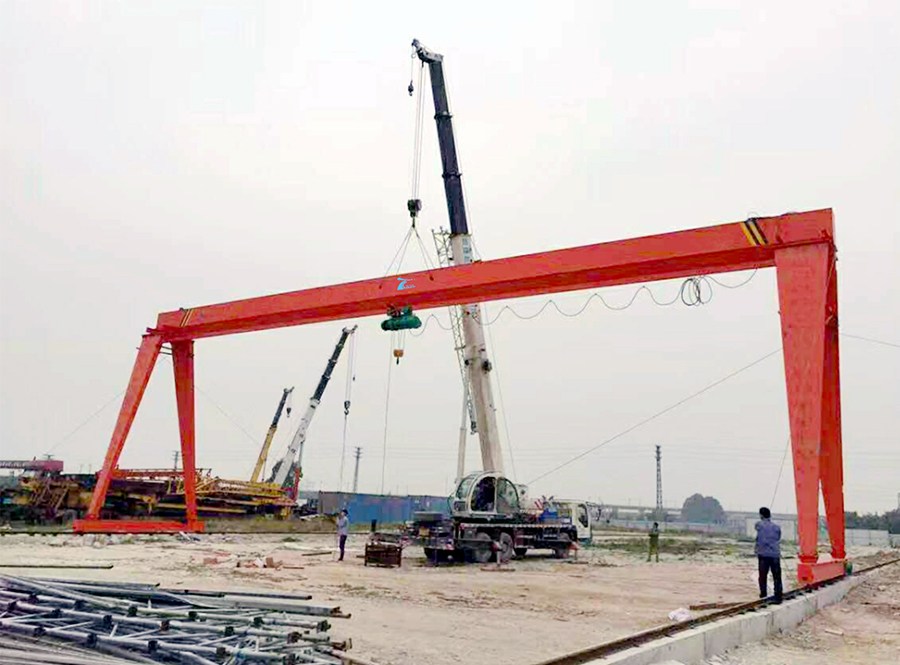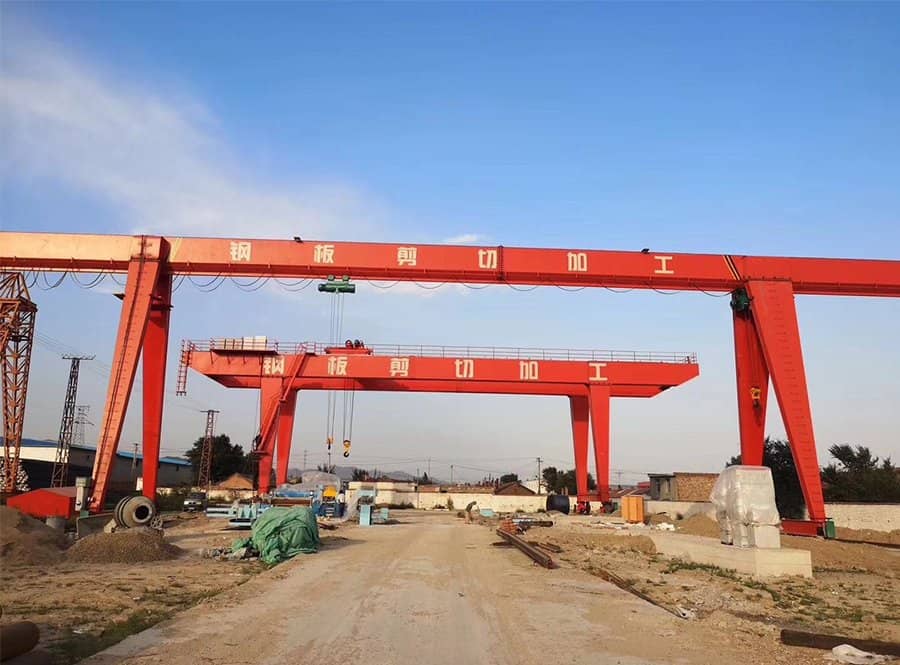Gantry cranes come with various features and options, depending on the specific model and manufacturer. However, here are some common features you can find in gantry cranes:

- Bridge: The bridge is the horizontal beam that spans the width of the portique. It supports the hoist and trolley, allowing them to traverse along the length of the crane. The bridge is typically made of steel and can be a single girder or double girder design.
- Legs or Supports: Gantry cranes are supported by legs or vertical supports on either side of the bridge. These legs provide stability and bear the weight of the crane and the loads being lifted. They are often adjustable in height to accommodate different lifting requirements or uneven ground.
- Hoist: The hoist is the lifting component of the gantry crane. It is responsible for raising and lowering the loads. Gantry cranes can be equipped with different types of hoists, such as electric chain hoists or wire rope hoists, depending on the lifting capacity and specific application.
- Trolley: The trolley is the mechanism that moves horizontally along the bridge of the gantry crane. It carries the hoist and allows for precise positioning of the load. The trolley can be manually operated or powered, depending on the crane configuration and requirements.
- Control System: Gantry cranes are operated using a control system. This can range from simple push-button pendant controls to more advanced radio remote controls or cabin-mounted controls. The control system enables the operator to maneuver the crane, control the hoist, and ensure safe and efficient lifting operations.
- Safety Features: Gantry cranes are equipped with various safety features to protect the operators, loads, and surrounding environment. These may include overload protection systems, emergency stop buttons, limit switches to prevent over-travel, and collision avoidance systems. Gantry cranes may also have safety devices such as warning lights and audible alarms.
- Optional Accessories: Gantry cranes can be customized with additional accessories to enhance their functionality. These may include festoon cable systems for providing power to the crane, anti-sway systems to minimize load swing, and load monitoring systems to ensure safe lifting operations. Other accessories can include lifting attachments, such as spreader bars or hooks, for specific load handling requirements.

These features can vary depending on the size, capacity, and purpose of the gantry crane. It’s important to consult the crane manufacturer or supplier to determine the specific features and options available for the desired gantry crane model.





















